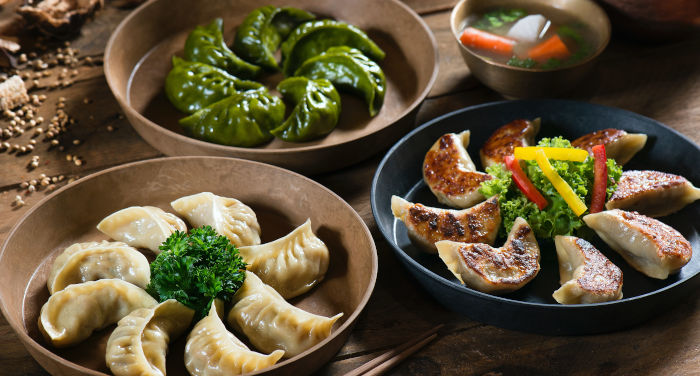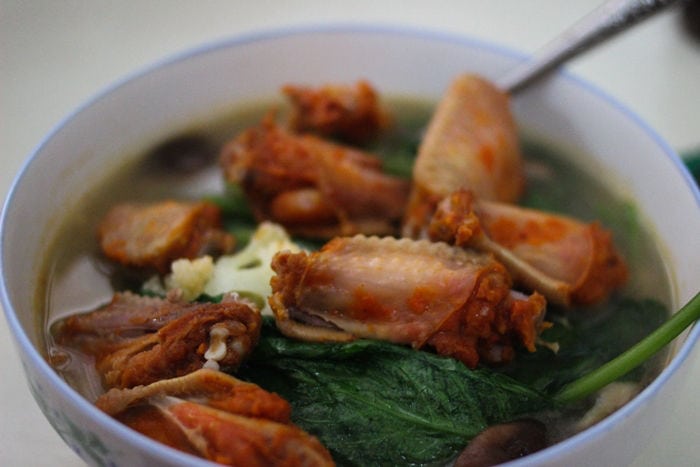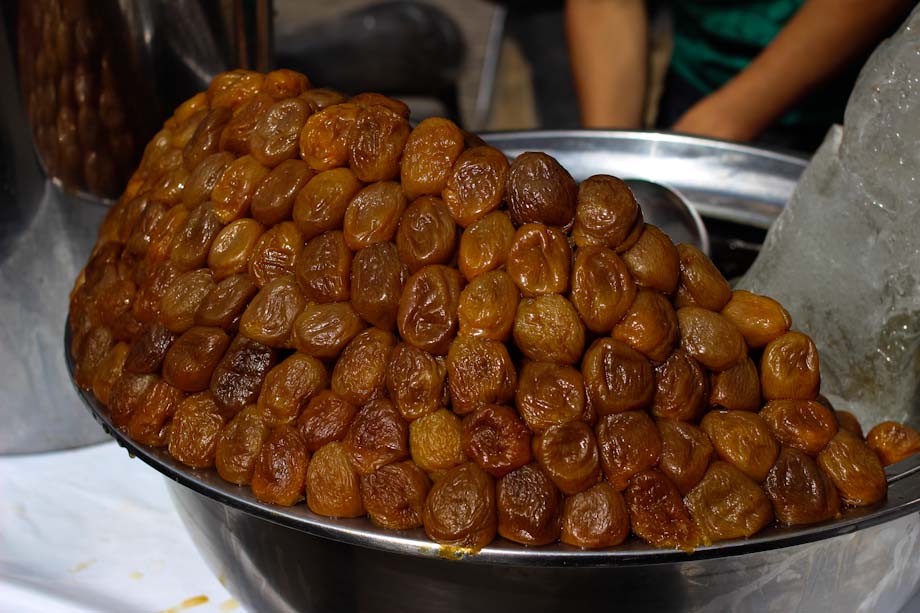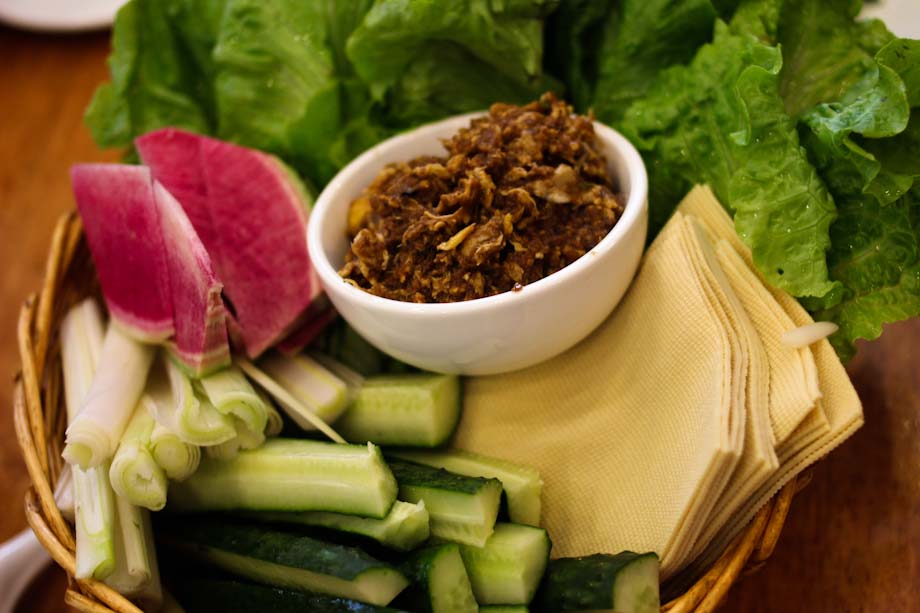
No panettone for Christmas, no Easter cake, and definitely don’t expect lentils for New Year! We’re not crazy, we’re in China. But don’t worry, even here there are typical holiday dishes, so let’s discover these culinary traditions for the Chinese holidays together!
春节 e 饺子 (chūnjié and jiǎozi) – The Spring festival and ravioli
The Spring festival (春 “Spring”, 节 “festival”) is also known as the Chinese New Year, and is the most important holiday for the Chinese people. It falls between the end of January and the beginning of February, and to celebrate it there isn’t a family that doesn’t eat ravioli!
The 饺子, besides having a symbolic meaning (the pasta of the ravioli encloses and keeps the filling together, just like a family, protected and united), is also the perfect occasion for getting the whole family together to prepare the ravioli, to then eat them all together.
For information on the ravioli, you can click this link, and find it under the heading “First dishes”.
As the Chinese New Year is “the” Chinese holiday, eating some ravioli is certainly not enough to honor the traditions. If the Chinese usually eat enormous quantities of food for every important event, for this holiday the custom is even greater.
Enormous tables are set up, and among the other dishes you’ll be able to find fish and chicken, both served whole for a hopeful appointment with the New Year.
Why these two dishes? The sound of the second one 鸡 (jī, “chicken”) calls to mind the term 吉 (jí, which means “fortune”, “good omen”), while that of 鱼 (yú, “fish”) is similar to 余 (yú, “abundance”).
Rigorously to be avoided are bitter foods, with the omen that the new year might be without bitterness, and foods in groups of four are an ominous number for the Chinese culture since the sound of 四 (sì, that is, the number 4) is very similar to 死 (sǐ, “death”).
If you’d like more information on the foods eaten at New Years, click here to discover the Chinese culinary traditions for this holiday!
元宵节 e 元宵 (yuánxiāo jié and yuánxiāo) Lantern Festival and yuanxiao
The Lantern Festival is celebrated on the fifteenth day of the lunar calendar, between February and March. The traditional food for this holiday are the 元宵 (also known by the name 汤圆 – tāng yuán), sweet balls of glutinous rice flour usually filled with black sesame seed sauce or red strawberry cream. They are boiled in water, in which they are usually served.
清明节 (qīngmíngjié) – Festival of pure light
清明节 is the festival dedicated to the celebration of remembering one’s own ancestors, and falls every year on April 4th or 5th.
Since this is a holiday dedicated not to the living, but to the dead, tradition dictates that it is the latter to enjoy the pleasures of the table.
For the festival of pure light it is in fact tradition that the Chinese visit and clean the tombs of their ancestors, on which they leave food of different types, among which there’s usually fruit, as well as the favorite foods of the deceased.
This tradition is in place to honor and please ones’ ancestors in the hopes that, even in the afterlife they can please their palate with the dishes they loved so much when they were alive.
龙船节 and 粽子 (lóngchuán jié and zòngzi) – Festival of the Dragon Boat and zongzi
粽子 is a snack shaped into a cone and prepared with glutinous rice filled (most often with sweet ingredients, such as dates, but there are also salty versions) and wrapped in bamboo leaves, which are usually steamed.
The Dragon Boat Festival is celebrated between the end of May and June, and custom requires that the zongzi be distributed to friends and relatives on the day of the festival.
中秋节 and 月饼 (zhōngqiū jié ande yuèbǐng) – Mid Autumn Festival and moon cakes
For the Mid Autumn Festival, which is celebrated between September and October, look up to admire a brilliant moon and taste a 月饼. The name of this typical dessert is derived from the moon (月 “moon”, 饼 “cake”), to which the history of the celebration is also tied to the goddess of the moon.
A bite of 月饼 will satisfy you for the entire day with its doughy filling, but if someone offers you one, it would be discourteous to not accept.
Moon cakes are available in different varieties, depending on the region and especially the filling. Here are the main ones.
蓮蓉 (liánróng) – lotus seed paste
Despite the 月饼 being rather heavy on the stomach in their consistency, those filled with lotus seed paste actually manage to surpass the others: usually the lotus seed paste surrounds an egg yolk, which looks like the shape of the moon.
豆沙 (dòushā) – red bean paste
Red bean cream is a very common filling for Chinese desserts, and is often the filling for 月饼.
棗泥 (zǎoní) – jujube paste
Jujube paste has a dark color trending toward black, with a sour flavor somewhat like tobacco.
五仁 (wǔ rén) – five nut paste
This paste is the most tolerable for Western tastes, composed of coarsely ground dried fruit and never without nuts and almonds.
Even many Chinese don’t like the flavor and consistency of 月饼, yet they continue to give them as gifts and eat them as tradition requires.
If after eating some 月饼 you want to eat something light, I recommend that you opt for a slice of 柚子 (yòu zī, or “pomelo”), an enormous grapefruit with a sweet flavor and full of vitamins.
It is in fact a custom to eat grapefruit because, besides the Mid Autumn holiday being the best period to eat them, their round shape symbolizes reunion.
Photo Credits: Photo by Abhishek Sanwa Limbu on Unsplash



